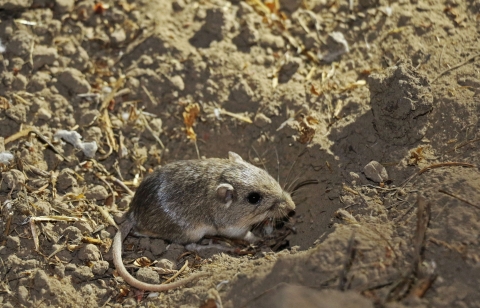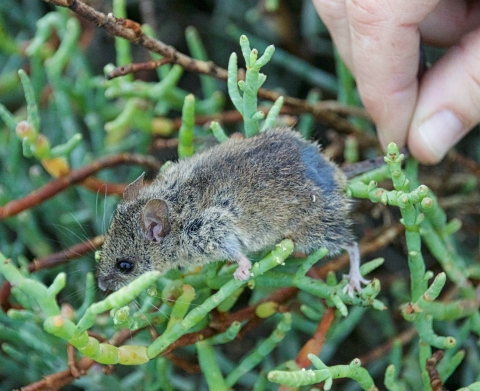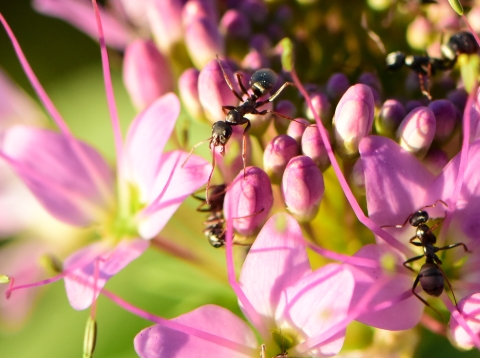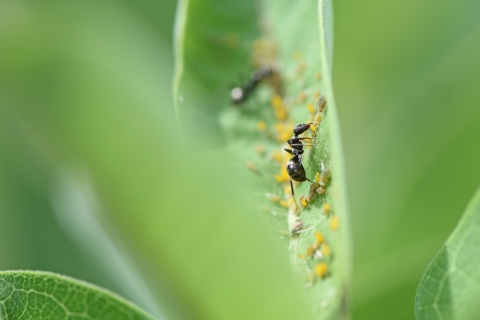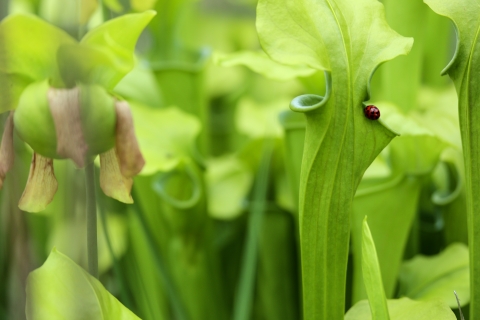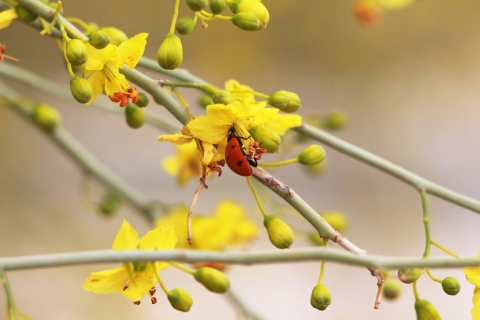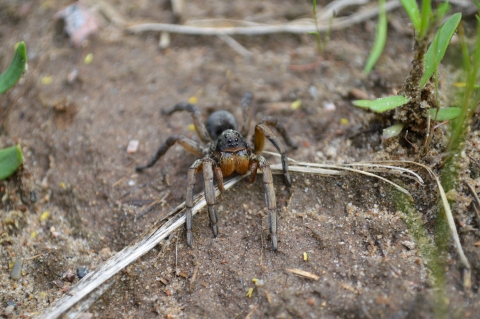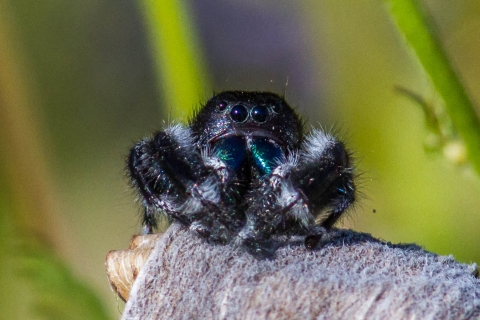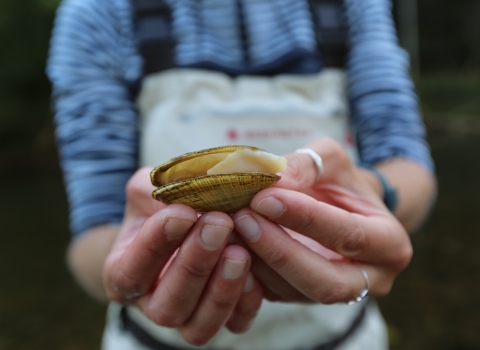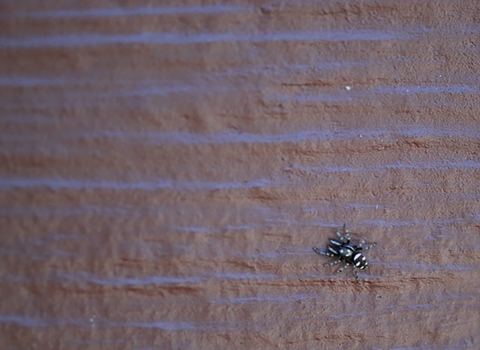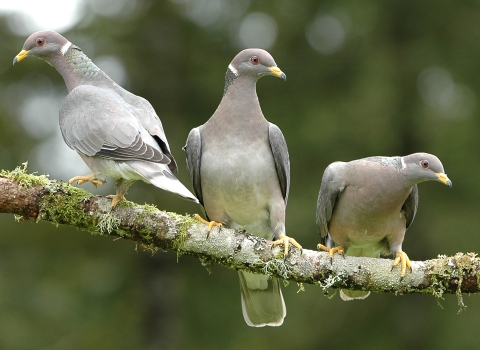Sharing space can be tough. Chore wheels go unturned; dishes are left in the sink; and leftovers vanish into thin air. Considering that a roommate's extra income means a roof overhead and food in the fridge, the benefits often outweigh the burden.
Much like their human counterparts, wild roommates have their fair share of flaws — leaving behind crumbs, bringing home viruses and intruding on your privacy. Despite their downfalls, some wild roommates like mice, ants, ladybugs and spiders have environmental advantages.
Mice
You may be thinking: Wild roommates? I don’t have any of those.
Pest-control companies suggest mice and other rodents occupy an estimated 21 million homes in the United States each winter. But our relationship with these winter visitors is complicated.
Aptly named, house mice have lived alongside humans for somewhere between 12,000 and 15,000 years. These tiny mammals have adapted to the shelter and food storage common in human homes.
House mice are often found in the walls, attics, basements, crawl spaces and garages of buildings. They are also known to live in barns, sheds and the crevices of rocks and woodpiles. Without a more suitable indoor nesting site, they will dig complex underground burrows. But even then, mice typically build close to buildings where food is readily available.
It’s hard to be fond of mice when they’re skittering across your floors or scratching in your walls. However, like all species, mice have their own role in the health of our environment. Mice are considered a keystone species in almost every ecosystem. Without them, those wild communities would fall apart or look drastically different.
Mice are food for predators of all sizes including bears, bobcats, skunks, foxes, owls and other birds of prey. In turn, mice eat pest insects like beetles, caterpillars and grasshoppers. This makes mice a key link in the food chain. Without them, predators would have to find alternate food sources to supplement their diets and insect populations would boom.
Did you know mice also help oak trees thrive? A study published in “Science” suggests mice are essential for protecting oak trees because they consume invasive gypsy moth caterpillars.
However, mice are also considered primary carriers of Lyme disease. Unlike larger mammals, their small size means in a high concentration of the disease bacteria in their blood. Ticks that subsequently feed on mice (following an initial bite) are highly likely to become infected and potentially transmit this disease to humans.
Reducing mouse populations to curtail the spread of Lyme disease could send gypsy moth and other insect numbers soaring and predator populations plummeting, potentially opening space for new invasive species invasive species
An invasive species is any plant or animal that has spread or been introduced into a new area where they are, or could, cause harm to the environment, economy, or human, animal, or plant health. Their unwelcome presence can destroy ecosystems and cost millions of dollars.
Learn more about invasive species .
Like we said, it’s complicated.
Ants
You may not have mice creeping through your kitchen, but it’s almost certain that this persistent insect has marched into your home. Ants make poor roommates, crawling through your food storage, sipping on your spills and making their way into mugs. Their presence is more of an annoyance than a danger, as ants do not commonly spread diseases and most species don’t harm structures.
No one is encouraging you to let armies of ants overthrow your home, but outdoors, these hardworking insects are essential for a thriving garden. As ants tunnel through the ground, they redistribute nutrients by moving soil from place to place. The spaces they leave behind improve the air and water circulation within the soil.
Ants are also active decomposers. They will feast on animal and insect remains, breaking down the waste into soil nutrients. Although they’re a hazard to your home, carpenter ants make their nests in dead and diseased wood, accelerating the decomposition of fallen trees.
Despite being considered pests themselves, these crawling critters provide effective control against other pests. They’re known to chow down on ticks and termites and have even been recorded ganging up on larger creatures like stink bugs, scorpions and cockroaches.
Consumed by birds, amphibians, fish and mammals ants are the foundation of many ecosystems' food chains. Although they are often overlooked, these tiny troublemakers make a big difference in the health of our environment.
Ladybugs
Luckily for ladybugs, their bright colors and sassy spots make them hard to miss. Often mistaken as a single species, there are more than 5,000 species of lady beetles worldwide and more than 450 in North America alone.
Common superstition suggests that these small stunners are harbingers of good luck. If you’re looking for luck in your garden, they are sure to boost your odds. Most North American lady beetles are predatory, feeding primarily on pest insects, including aphids and mites.
Aphids are a common pest found in flower gardens. Varying in shade from green, black, red, yellow, brown or gray, these itty bitty bugs may resemble colorful polka dots when gathered on leaves. However, their size is deceptive. Aphids can cause great damage to a garden by sucking the sap and the life out of plants. They breed by the thousands in a matter of days and are known to destroy beautiful ornamental plants like tulips and dahlias. Hungry ladybugs can stop an aphid infestation in its tracks, saving the blooming signs of spring we have come to know and love.
Adult ladybugs are incredible fliers. They can reach speeds of 37 mph, altitudes of 3,600 feet and distances up to 74 miles in a single flight. This mobility means that once a ladybug has exhausted a host plant of all its pests, it can easily move on to the next available source of prey.
Unlike the previous two roommates, there are benefits to cohabitating with ladybugs. During the winter, these bright beetles shelter within leaf litter, beneath bark, under trees and, of course, in our homes. Just as they do in your summer garden, these autumnal intruders will keep your houseplants free from aphids and mites. When you provide a safe space to hibernate, you ensure that these beautiful beetles will bring you good garden luck in the coming spring.
Spiders
Arachnophobia or the fear of spiders is one of the oldest and most common phobias in Western society. Whether it’s the many eyes or eight legs, something about skittering spiders sends people scattering.
Before launching into the pros of sharing space with spiders, it’s important to put a common myth to bed: Evidence strongly suggests that spiders do not and would not crawl in your mouth while you sleep. Some scientists believe, based on their size, spiders perceive humans much like we perceive a mountain. To them, we are so large that we become just another feature of the landscape. Even then, a snoozing human has a heartbeat, breathes and snores — all of which create vibrations that alert spiders to danger.
Even the most brave and curious of spiders would be hesitant to approach the frightening, vibrating mountain that is a sleeping human.
Now the truth about spiders: These helpful homies feed primarily on disease-carrying pest insects like fleas, cockroaches, flies and mosquitoes. According to National Geographic, it is estimated that one spider can eat as many as 2,000 insects in a year.
That’s not all. The amazing attributes of spiders are constantly studied for their use in modern science and medicine. For example, the compound of chemicals in South American spider venom is being studied for its potential to treat muscular dystrophy. With a higher strength-to-density ratio than steel, spider silk could one day provide insight for new technology in airplanes, bullet proof vests and prosthetics.
So, we know spiders are extremely important, but why should we keep them in our homes? Besides being champions in the fight against pests, house spiders have been living indoors since the age of the Roman Empire. These spiders usually spend their entire lifecycle in one building and are not capable of surviving outdoors. Only 5% of spiders you see in your home have ever been outdoors and will quickly perish when faced with the harsh conditions.
If you are uncomfortable with spiders occupying your more sacred spaces like bedrooms, kitchens and bathrooms, relocate them to less intrusive environments like a basement or garage. No one is really using the far-most corner of their ceiling space anyway, and a web-weaving wonder will only help keep your home pest free.
Humanity is prone to underestimating the small and silent things in this world. However, these seemingly insignificant critters might just be the pivot our environment balances upon.
From pest control to decomposition, what our wild roomies lack in rent they more than make up for in their contributions to our environment — indoors and out. So, when it’s safe to do so, keep the critters and know that, even when you think you’re alone, you’re not the only conservation champion in your home.

